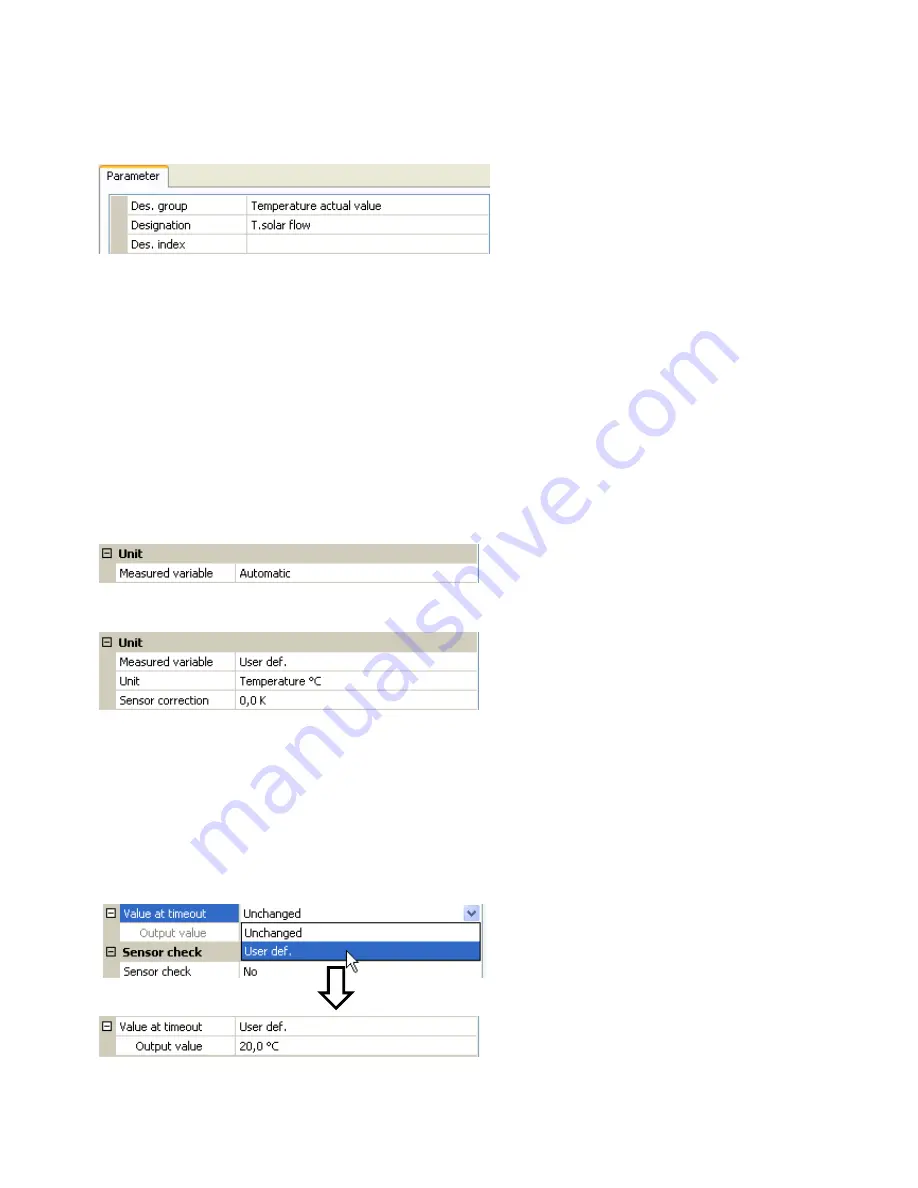
Programming with TAPPS2 / DL bus
34
Designation
Every DL input can be given its own designation. The designation can be selected from various
designation groups or can be user defined.
Example:
DL bus timeout
As long as the information continues to be imported from the DL bus, the
network error
for the DL
input will be
"
No
".
If the controller scans the DL sensor value three times and no value is transmitted, the
network error
changes from "
No
" to "
Yes
". You can then define whether the last value transmitted or a definable
substitute value should be issued (only when the measured variable is set to:
User def.
).
The
network error
can also be selected as the source of a function input variable, which allows the
controller to react appropriately to a failure of the DL bus or DL sensor.
In System values / General, a network error for
all
DL inputs is available.
Unit
If the measured variable is set to "
Automatic
", the unit of measurement specified by the DL sensor will
be applied in the controller.
If you select "
User def.
", you can select a
unit
of your own, a
sensor correction
and, if the
sensor
check
is set to active, a monitoring function.
Every DL input is assigned a
unit
, which can differ from the unit used by the DL sensor. A wide range
of units is available to choose from.
Sensor correction
The value of the DL input can be corrected by applying a fixed differential value.
Value at timeout
This setting is only displayed if the measured variable is set to "
User def.
".
If a timeout is set, you can define here whether the controller should issue the last value transmitted
("Unchanged") or a definable substitute value.






























